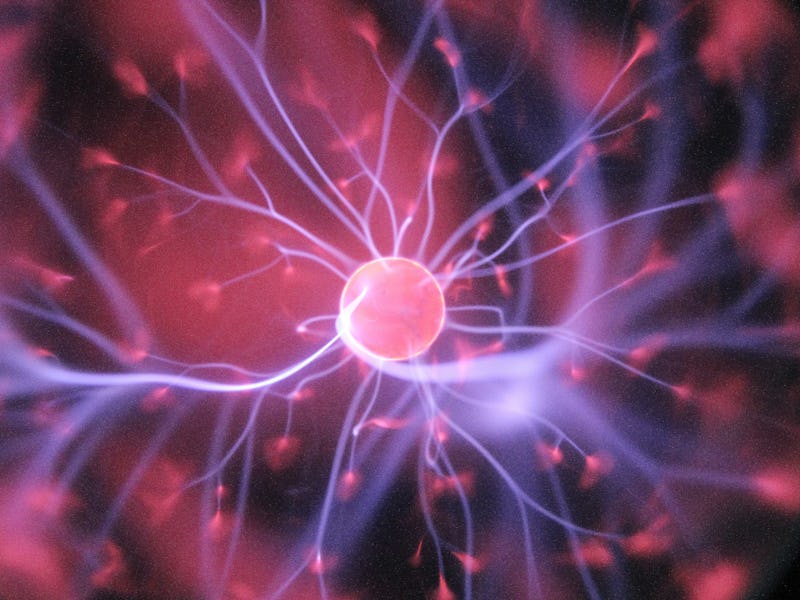How Life Emerged From the Primordial Mist
A new book unpacks the secrets of the ribosome.

As core as DNA is to ourselves, the famous double helix is core to the study of biology worldwide. But these fundamental molecules cannot work alone. DNA stores the source code and data to build our bodies, and its discovery opened the door to countless new threads of research, including the question, “What machine reads our code?”
Nobel Prize-winning biologist Venki Ramakrishnan unravels the journey to pursue the answer in Gene Machine: The Race to Decipher the Secrets of the Ribosome. He lays out his ambitious journey in the face of uncertainty, explaining not only the science with lucid clarity, but also offers perspective on the complex politics surrounding the pursuit of knowledge with humility.
Below is an excerpt from Gene Machine, published this week by Basic Books.
Emerging From the Primordial Mist
How life began is one of the great remaining mysteries of biology. All life requires some form of energy in the right chemical environment. Some people have pointed out that a lot of the chemistry that life uses resembles the kind of chemistry that occurs at the edges of geothermal vents in the ocean. Even if this is merely a coincidence as others have argued, it is useful to think about what conditions made it possible for life to emerge. But fundamentally life is more than a set of chemical reactions; it is the ability to store and reproduce genetic information in a way that allows complex life forms to evolve from very primitive ones. By this criterion, there is no question that even viruses are alive, even though people used to question it because they need a host cell to reproduce. However, anybody who has become ill from a virus and experienced his or her body fighting an infection would not doubt that viruses are alive.
The problem was that in nearly all forms of life, DNA carried genetic information, but DNA itself was inert and made by a large number of protein enzymes, which required not only RNA but also the ribosome to make those enzymes. Moreover, the sugar in DNA, deoxyribose, was made from ribose by a large complicated protein. Nobody could understand how the whole system could have started. Scientists who were thinking about how life began, like Crick, Leslie Orgel at the Salk Institute in La Jolla, and Carl Woese at the University of Illinois, suggested that maybe life began with RNA. At the time, this was pure speculation — almost science fiction — because RNA was not known to be capable of carrying out chemical reactions.
Cech’s and Altman’s discovery changed all that. RNA was now a molecule that could carry information as a sequence of bases, just like DNA, and could also carry out chemical reactions like proteins. We now know that the building blocks of RNA can be made from simple chemicals that could have been around in the earth billions of years ago. So it is possible to imagine how life may have started with lots of randomly made RNA molecules until some of them could reproduce just themselves. Once this happened, evolution and natural selection could allow more and more complicated molecules to be made, eventually even something as complicated as a primordial ribosome. The idea of a primordial RNA world, a term first coined by Wally Gilbert, became widely accepted.
The ribosome may have started off in an RNA-dominated world but because it made proteins, it became a Trojan horse. Proteins turned out to be much better at doing most kinds of reactions than RNA because their amino acids are capable of more varied chemistry than the simpler RNA molecule. This meant that as proteins were made, they gradually evolved to take over most of the functions of the RNA molecules around at the time and much more. In doing so, they transformed life as we know it. This may also explain why although the ribosome has a lot of RNA, the enzymes that replicate DNA or copy it into RNA are now made entirely of proteins. This is probably because the use of DNA to store genes came later; by that time, proteins had become prevalent and were carrying out most of the reactions in the cell.
Of course, this doesn’t explain how genes carrying a code to make proteins came into being. The best guess is that an early form of ribosomes just made short stretches of random peptides, which helped to improve the RNA enzymes that were around then. But from there, how genes originated that carried instructions to make proteins that had amino acids strung together in a very specific order was quite a leap and is still one of the great mysteries of life. And that in turn would mean that in addition to the large subunit, many other elements would have to come into existence: mRNA to carry the genetic code, tRNAs to bring in amino acids, and the small subunit to provide a platform for the mRNA and tRNAs to bind. But before the discovery of RNA catalysis, people couldn’t see how the system could have begun even in principle.
Excerpted from Gene Machine: The Race to Decipher the Secrets of the Ribosome by Venki Ramakrishnan. Copyright © 2018. Published by Basic Books